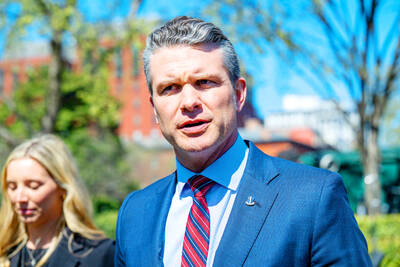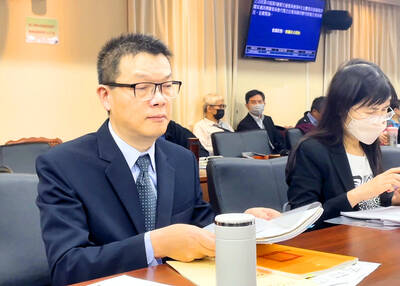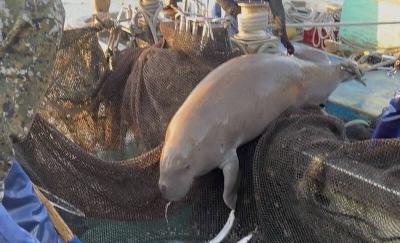Shanghai opened the doors on the World Expo this month with a lavish opening ceremony and futuristic pavilions from 189 participating countries, but the event also brought serious traffic congestion and chaos to the city as visitors flocked to the expo site.
The opening ceremony on Friday night last week attracted tens of thousands of visitors to the expo site along the Huangpu River. After the ceremony, traffic around the area was paralyzed as people filled the streets waiting for buses or trying to hail taxis.
The city closed several subway entrances to prevent the subway exceeding capacity, adding to the difficulty of getting home.
Among the crowds wandering the streets of downtown Shanghai at midnight were foreign reporters who were transported to People's Square following the opening ceremony. Some reporters walked for more than 30 minutes to find a free taxi, while many Taiwanese reporters went back to their hotels on foot.
Mavis Lin, a Taiwanese reporter who walked for about an hour from People's Square to her hotel in the Puxi area, said the street scene was so chaotic, with people fighting to get on buses or taxis, that she gave up on finding public transportation.
"Imagine the street scenes in Taipei after the New Year party and double the number of people on the streets. That's how chaotic it was," she said.
An unlicensed taxi driver, who charged more than 300 yuan (US$44) for a 15-minute ride that normally costs only 20 yuan, said the expo organizers overlooked traffic flows and that the public transport system was unable to cope with the demand even before the expo began and hundreds of thousands of visitors crowded the city.
"It's already difficult to get a cab in Shanghai, and the expo has made things worse. You won't be able to find a licensed taxi now," said the driver, who refused to give his name.
With more than 25 million tickets already sold, more than 70 million people are expected to attend the 184-day event, an average of nearly 400,000 per day, according to the expo organizers.
About 4,000 new cabs have been put into service to accommodate the record-high number of visitors. Only these taxis are permitted to take passengers from four designated taxi stops at the Pudong and Puxi expo sections, while other taxis are barred from the area between 7am and 9pm, according to organizers.
One designated taxi driver surnamed Wang said the city installed GPS devices on all of the 4,000 taxis to monitor the situation, as taxi drivers are banned from picking up passengers in other areas.
Shanghai Mayor Han Zheng (韓正) said during his visit to Taipei last month that the city has constructed four new subway lines, including the newly launched Line 10, and that they should ease congestion during the expo. Shanghai also encouraged people to use public transportation by setting up nine P+R (park and ride) spots near subway stations that offer parking spaces for visitors.
The city's measures to ease the congestion in Shanghai, however, have failed. Long lines of cars clogged the highways leading to downtown Shanghai and the expo site. Traffic congestion was also serious around the city's major attractions such as the Bund, which was crowded with local tourists who rushed to Shanghai when the Golden Week holiday began on May 1.
Commissioner of Taipei City's Department of Transportation Luo Shiaw-shyan (羅孝賢), who accompanied Taipei Mayor Hau Lung-bin (郝龍斌) to attend the opening of the Taipei pavilion at the expo on May 1, said the shortage of taxis had been an issue in Shanghai and the large number of visitors at the expo highlighted the problem.
The city only issued taxi permits to people with registered households in Shanghai. With a population of over 19 million, Shanghai has only 40,000 taxis, while in Taipei there are 60,000 taxis, Luo said.
Tight security checks at all subway entrances also discouraged people from taking public transportation. Security checks at subway stations were required after the city opened subway Line No. 13 that passes under the expo site. All passengers are required to pass through electronic detection devices and have their bags checked when entering stations.
Traffic inside the expo site was better. Expo organizers set up bus stops every 250m within the 5.28km2 site and services are frequent. A total of 120 buses roll by every three minutes to take visitors between the Pudong and Puxi Expo sites.
Lily Zhou (周莉莉), a Shanghai resident who visited the expo on May 4, said the shuttle buses were convenient, but complained about the long lines in front of the bus stops and delays.
"There are just too many visitors to the expo and the site is so big. It took us over 30 minutes to walk from Zone A to Zone C in the Puxi section in the evening because the shuttle bus didn't come," she said, urging the expo organizers to provide more frequent shuttle bus services.
The expo organizers said they expected smoother traffic and smaller crowds this week as the "Golden Week" holidays in China ended on Tuesday.

The High Prosecutors’ Office yesterday withdrew an appeal against the acquittal of a former bank manager 22 years after his death, marking Taiwan’s first instance of prosecutors rendering posthumous justice to a wrongfully convicted defendant. Chu Ching-en (諸慶恩) — formerly a manager at the Taipei branch of BNP Paribas — was in 1999 accused by Weng Mao-chung (翁茂鍾), then-president of Chia Her Industrial Co, of forging a request for a fixed deposit of US$10 million by I-Hwa Industrial Co, a subsidiary of Chia Her, which was used as collateral. Chu was ruled not guilty in the first trial, but was found guilty

‘DENIAL DEFENSE’: The US would increase its military presence with uncrewed ships, and submarines, while boosting defense in the Indo-Pacific, a Pete Hegseth memo said The US is reorienting its military strategy to focus primarily on deterring a potential Chinese invasion of Taiwan, a memo signed by US Secretary of Defense Pete Hegseth showed. The memo also called on Taiwan to increase its defense spending. The document, known as the “Interim National Defense Strategic Guidance,” was distributed this month and detailed the national defense plans of US President Donald Trump’s administration, an article in the Washington Post said on Saturday. It outlines how the US can prepare for a potential war with China and defend itself from threats in the “near abroad,” including Greenland and the Panama

DEADLOCK: As the commission is unable to forum a quorum to review license renewal applications, the channel operators are not at fault and can air past their license date The National Communications Commission (NCC) yesterday said that the Public Television Service (PTS) and 36 other television and radio broadcasters could continue airing, despite the commission’s inability to meet a quorum to review their license renewal applications. The licenses of PTS and the other channels are set to expire between this month and June. The National Communications Commission Organization Act (國家通訊傳播委員會組織法) stipulates that the commission must meet the mandated quorum of four to hold a valid meeting. The seven-member commission currently has only three commissioners. “We have informed the channel operators of the progress we have made in reviewing their license renewal applications, and

A wild live dugong was found in Taiwan for the first time in 88 years, after it was accidentally caught by a fisher’s net on Tuesday in Yilan County’s Fenniaolin (粉鳥林). This is the first sighting of the species in Taiwan since 1937, having already been considered “extinct” in the country and considered as “vulnerable” by the International Union for Conservation of Nature. A fisher surnamed Chen (陳) went to Fenniaolin to collect the fish in his netting, but instead caught a 3m long, 500kg dugong. The fisher released the animal back into the wild, not realizing it was an endangered species at